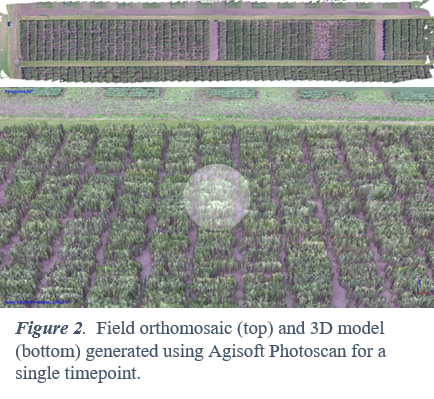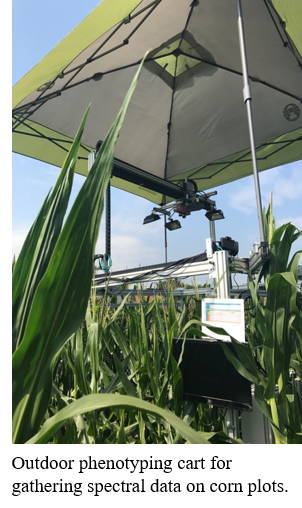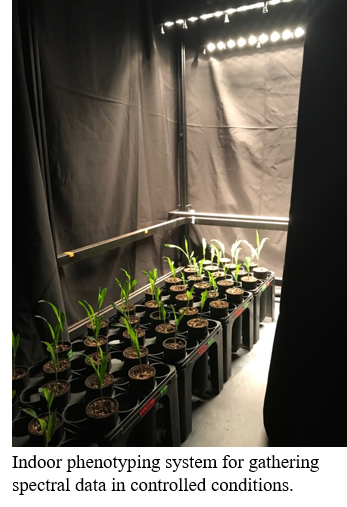Sara Tirado
19 April 2018
Advisors: Nathan Springer & Candice Hirsch
Objective 1: Develop technology and analysis procedures for extracting traits of agronomic importance in cropping systems using UAS imagery
A preliminary framework for extracting phenotypic traits of interest was developed following the collection of drone imagery for a diverse maize inbred population in the summer of 2017 (Fig. 1). The approach consists of gathering aerial RGB imagery using the DJI Phantom 4 Advanced drone throughout the growing season for a maize field with installed GCPs. The images are used to generate a field orthomosaic and a 3D point cloud (Fig. 2). Plants are then segmented from the soil and phenotypic traits from individual plots including stand counts, plant height, plant rotation and canopy coverage are extracted using custom algorithms.
Although previous work has been done to extract basic features of maize fields using aerial data, no automated approach is currently available for feature extraction on a per-plot basis, which is crucial for making comparisons among different lines in a breeding and research setting. Plant height is a major indicator of plant growth and development and can be used to predict yield as well as evaluate stress severity among lines. An automated system for extracting plant height can therefore provide a resource for monitoring crop growth and aid farmers with decisions regarding nutrient applications.
Objective 2: Determine early season variables that correlate to total yield by characterizing the response of maize genotypes to different growing conditions
In order to achieve a genotype’s maximum yield potential, it is crucial that field management practices are tailored to specific varieties as well as localized soil and environmental conditions. In order to do this, we must understand how different genotypes interact with the environment they are grown in. This aim will characterize how maize hybrids respond to environmental and management variables and how this response relates to overall plant productivity using the approach optimized in Objective 1.
Objective 3: Identify characteristic wavelengths for different weed and crop species commonly found in intercropping systems using hyperspectral imaging
By identifying specific band combinations that can differentiate between crop species, we can then develop custom multispectral cameras that can be used to segment and evaluate stand productivity within intercropping systems using image analysis approaches such as the one being developed in Objective 1. We can also use this technology to identify weed varieties and evaluate weed pressure throughout the field thus enabling the implementation of site-specific integrated weed management programs.


